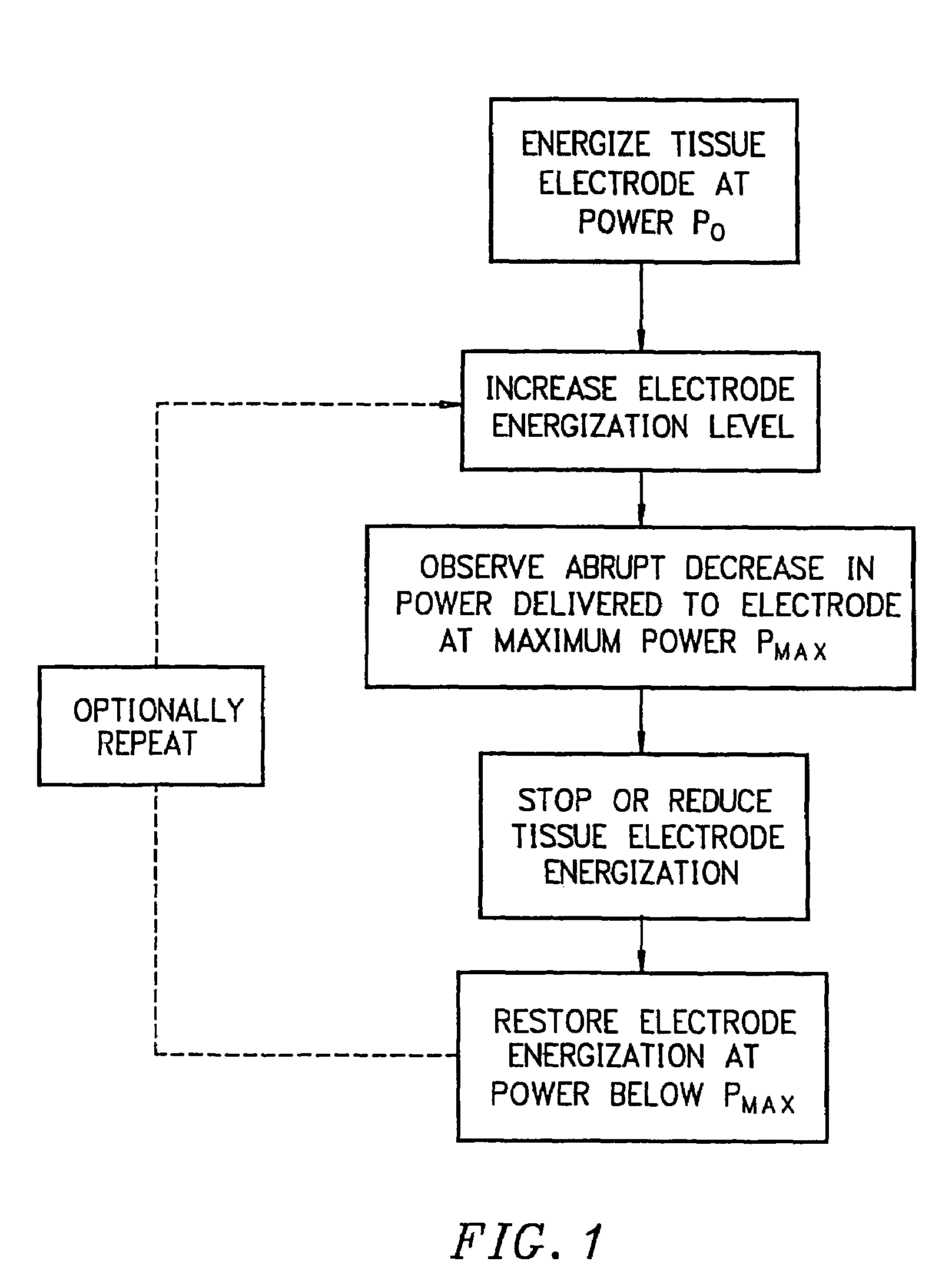Method and system for heating solid tissue
- Summary
- Abstract
- Description
- Claims
- Application Information
AI Technical Summary
Benefits of technology
Problems solved by technology
Method used
Image
Examples
Embodiment Construction
[0031]Methods, systems, and apparatus according to the present invention will rely on placement and use of one or more electrode element(s) positioned at or within a treatment region within solid tissue of a patient. The treatment region may be located anywhere in the body where hyperthermic exposure may be beneficial. Most commonly, the treatment region will comprise a solid tumor within an organ of the body, such as the liver, kidney, lung, bowel, stomach, pancreas, breast, prostate, uterus, muscle, and the like. The volume to be treated will depend on the size of the tumor or other lesion, typically having a total volume from 1 cm3 to 150 cm3, usually from 1 cm3 to 50 cm3, and often from 2 cm2 to 35 cm2. The peripheral dimensions of the treatment region may be regular, e.g. spherical or ellipsoidal, but will more usually be irregular. The treatment region may be identified using conventional imaging techniques capable of elucidating a target tissue, e.g. tumor tissue, such as ult...
PUM
 Login to View More
Login to View More Abstract
Description
Claims
Application Information
 Login to View More
Login to View More - R&D
- Intellectual Property
- Life Sciences
- Materials
- Tech Scout
- Unparalleled Data Quality
- Higher Quality Content
- 60% Fewer Hallucinations
Browse by: Latest US Patents, China's latest patents, Technical Efficacy Thesaurus, Application Domain, Technology Topic, Popular Technical Reports.
© 2025 PatSnap. All rights reserved.Legal|Privacy policy|Modern Slavery Act Transparency Statement|Sitemap|About US| Contact US: help@patsnap.com



